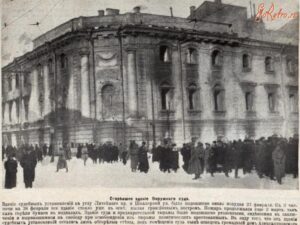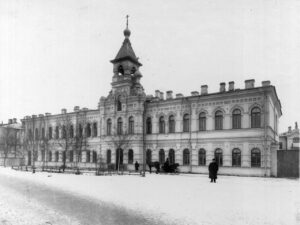As should be clear from my posts, one of the key events I’m studying for this project is the murder of the headmaster and monk Ignatii Dvernitskii by two of his pupils in 1909. The case was quickly transferred from the regular courts to a temporary military tribunal, sent from Omsk (The military district court in Omsk covered the military tribunals for all of western Siberia). It was not uncommon, at the time, for especially sensitive cases to be tried by military tribunals, as these courts avoided juries and had less scrutiny. I would love to find the court transcripts of the tribunal for this particular case (took place in October 1909), as such a transcript would be of obvious help in telling the story.
In any case, when I was in Tomsk last summer, I discovered (not surprisingly), that the State Archive of Tomsk Oblast’ did not have the records of the temporary military tribunals. Since then, I’ve been asking around, using connections through friends and colleagues to figure out where these records might be. Could they be in Omsk? Moscow? St. Petersburg? After some back and forth with a colleague at Central European University (CEU) who has many connections with Russian scholars of the pre-revolutionary period, one of these scholars, from Omsk, sent him the following piece of information: “…события гражданской войны привели к массовому уничтожению документов – были разгромлены архивы Акмолинского областного правления, омского военно-окружного суда… уничтожены часть жандармских, полицейских и тюремных архивов” [rough translation: “… the events of the Civil War led to mass destruction of documents: the archives of the Akmolinsk Oblast government [and] the Omsk military district court were destroyed… [also] destroyed were parts of the gendarmerie, police, and prison archives”]. I’m waiting for more information about the source of this information, but the destruction of the Omsk military district court archive likely means that any transcripts or records from the Ignatii Dvernitskii case no longer exist.

Burning of the Akmolinsk District Court
The same CEU colleague sent a photograph from EtoRetro.ru (included in this post) showing the burning of the district court in Akmolinsk. The dates given in the photo are Feb 27-28, but no year is included.
In any case, I’ll keep up the search, but it looks unlikely that I’ll be able to find the court records. Who said hindsight is 20/20?
